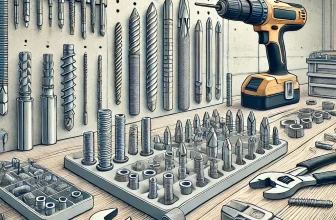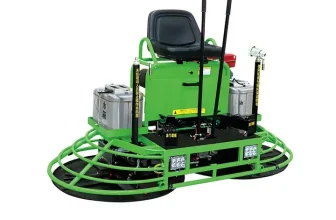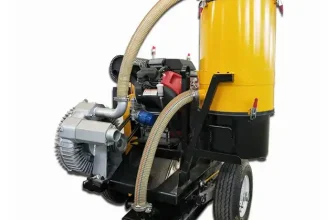Cutting concrete with a circular saw is an easy and effective way to make precise cuts in your concrete projects. It’s a relatively simple process that requires minimal tools and materials, making it ideal for DIYers of all skill levels.
With the right technique and equipment, you can cut through thick or thin slabs of concrete quickly and accurately.
Read on to learn how to use a circular saw safely and effectively when cutting concrete with a circular saw.
What you will Need
To use a circular saw to cut concrete effectively, you’ll need the right tools and materials. You’ll need a circular saw, concrete cutting saw blade, safety glasses or goggles to protect your eyes from dust and debris, ear protection from loud noises, gloves for handling sharp objects, a hammer and chisel for breaking up large pieces of concrete after cutting them, and measuring tape for making accurate cuts.
You may also want to have some wet rags on hand to clean off any excess dust or debris after cutting. With all these items at your disposal, you should be able to make quick work of whatever project you have in mind.
Blade Types for Cutting Concrete
When it comes to cutting concrete with a circular saw, the type of blade you use is probably the most important factor.
There are basically two different types of circular saw blades suitable for cutting concrete. These are abrasive corundum masonry and diamond blades.
Corundum Masonry Circular Saw Blades
These abrasive masonry blades are specially designed cutting blades used in circular saws for cutting concrete. The cutting edges of these blades are made from a tough and durable material called corundum, which is an abrasive material commonly used for cutting and shaping hard materials like concrete. Corundum is composed of two elements, aluminum oxide, and silicon carbide, which give it its cutting ability.
Corundum abrasive blades are the most popular cutting tool for cutting concrete with a circular saw for DIYers. They are relatively inexpensive, easy to find and work standard circular saws.
These blades are effective in cutting through hardened concrete surfaces, and they are also pretty durable and can be used multiple times before needing to be replaced in most cases.
Overall, corundum blades prove invaluable when cutting through hard surfaces such as concrete and masonry. With their superior cutting power and good durability, they offer DIYers and even light-duty professional users a reliable solution for getting precise cuts quickly and safely every time.
Diamond Circular Saw Blades
If you want the best and most durable circular saw blade for cutting concrete with your circular saw you need a diamond blade that’s specifically designed for cutting masonry and concrete materials.
Diamonds are the hardest known natural substance on Earth. These blades are much tougher than corundum masonry blades and can handle the hardness of the material without dulling.
Diamond blades are better than masonry blades when making longer or deeper cuts, or if you have a lot of cuts to make. If you are a professional that plans to make a lot of concrete cuts then a diamond blade will be a worthwhile investment.
When looking for diamond circular saw blades for cutting concrete you will see two main types of blades, dry and wet. Some diamond blades can be used either dry or wet.
Dry Diamond Blades
Dry diamond blades, as the name implies, are designed to be used without water. If you are cutting in an area that cannot get wet or there is no source of water available then this type of diamond is the best choice.
In some cases, there may be times when the area you are working in has electric wiring or other things that might introduce a dangerous situation when water is used.
Dry diamond blades also tend to produce a lot of dust, so make sure to take that into account when using them.
Wet Diamond Blades
Wet diamond blades are designed to be used with water and require a special circular saw that can be used with water.
If the area you are working in is an area where water is available and can be used then these are the best blades for cutting concrete with a circular saw.
These types of blades run cooler since the water helps cool the blade. Another advantage of wet diamond blades is that they produce less dust than dry diamond or corundum masonry blades.
Wet diamond blades produce much less dust than dry blades, so if you are working on a project where minimal dust is required then wet diamond blades are the best choice.
As far as cut smoothness, that is something else that wet diamond blades excel at, so if you want the best cut quality a web diamond blade is the right choice.
Tip for Cutting Concrete with a Circular Saw
Safety Gear
It is important to use appropriate safety gear when using an abrasive blade. This includes hearing protection, safety glasses or goggles, gloves, and protective clothing to protect you from shards of concrete or flying debris that may come off during cutting.
In addition, make sure to read all directions for the equipment you are using and follow all safety precautions and suggestions from the manufacturer.
Measure Twice, Cut Once
This is a very common saying, and you have probably heard it before. But it basically means to make sure of your measurements before cutting something.
Before making any cuts with the circular saw, take precise measurements using a measuring tape or another appropriate device in order to ensure accurate cuts each time.
Use the Right Equipment
Using the right tool for the right job is always important, and this is very important when using a circular saw to cut concrete.
If you are doing lots of cuts then it is best to invest in a diamond blade and a specialized circular saw designed for cutting concrete instead of a standard circular saw used to cut wood.
Take Your Time
When cutting concrete with a circular saw it is best to take your time. Let the saw and blade do most of the work, and do not apply too much force.
Trying to cut too quickly can reduce the life of your saw and blades.
Cutting Angle
When cutting through concrete with an abrasive blade, it is important to ensure that the cutting angle is between 30 and 45 degrees for best results.
This angle will help to create less dust, smoother cuts, and reduce the risk of damaging the blade itself.
Don’t Overheat the Blade or Saw
This goes along with cutting too quickly and also cutting for too long at a time, especially when using a dry blade.
Cutting too quickly or for too long will overheat the cutting blade and potentially the saw, especially if you are using a standard circular saw that is not designed specially to cut concrete.
Overheating will more quickly dull your blade and also reduce the life of your saw.
Clean Up
Cutting concrete with a circular saw can produce a lot of dust, especially when using a dry blade. Even if using a wet blade there will be a lot of dust on surfaces around the cut once the water evaporates away.
It is important to clean your equipment and work area often so that your equipment performs well and lasts a long time. This also ensures your work area is safer and reduces the chances of damage to any existing items in the work area.
Final Thoughts
If you plan to make long deep cuts or lots of cuts then it is better to invest in a diamond concrete blade for your circular saw, otherwise an abrasive masonry blade may be adequate.
It may also be a good idea to invest in a circular saw specially designed to cut concrete if you plan to need to work work with concrete often.
Cutting concrete with a circular saw is a lot different than using a saw to cut wood, but with the right kind of blade in your circular saw, you’ll be able to make precise cuts in your projects quickly and efficiently.







